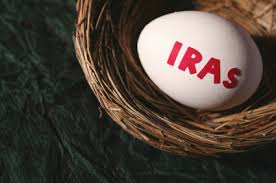Self Directed IRA and 401k: Estate Planning Opportunities

Many ignore their IRAs and 401ks when it comes to estate planning. This can be for any number of reasons:
- Retirement accounts are considered “untouchable” for most of life
- Many assume that their retirement accounts will be depleted during their lifetime (which is rarely true)
- Many are not aware of the federal laws that pertain to gifting retirement accounts
With the right planning, you can use retirement accounts for your (and your heirs) advantage. I write about this in a recent article, published in the Puget Sound Business Journal’s Estate Planning Supplement about the powerful combination of a Roth IRA and a “Legacy Trust”.
What does the term “Self Directed IRA” mean?
A self-directed IRA is still an IRA; there is no underlying legal difference.
Nonetheless, the term “self-directed IRA” can refer to any one of three different types of IRA accounts:
- An IRA held by a traditional type of custodian
The custodian, e.g. Charles Schwab, allows the IRA owner to invest into any stock, bond, mutual fund, etc. that the broker offers
- An IRA held by a unique type of custodian that invests directly into non-traditional assets
This includes real estate, promissory notes, privately-held companies, etc. The legal owner of the asset is “ABC Trust Company FBO John Doe, IRA”.
- An IRA that first purchases ownership in a LLC, with the LLC executing the investments
This involves a similar unique custodian for the IRA. The IRA owns the LLC, and the LLC is used for the investments.
Each investment method has its own pros and cons and investors should consider all options before moving forward.
Changes to the self directed IRA and 401k rules this year
The most significant change is the new “in-plan” Roth conversion rules.
In the past, clients with 401(k) accounts had very limited options for moving pre-tax 401(k) funds into post-tax Roth 401(k) accounts. They were unable to convert some or all of the account into a plan’s Roth component.
The new “in plan” Roth conversion rule enables clients to convert pre-tax funds into Roth funds within the plan. The client must pay the taxes associated with the Roth conversion, but is then able to have Roth funds within the plan.
